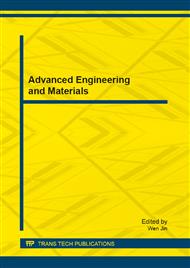p.8
p.14
p.20
p.26
p.31
p.35
p.42
p.49
p.55
Fabrication of TiO2 Nanotube Arrays in Ethylene Glycol Electrolyte by the Electrochemical Anodization Method
Abstract:
Highly-ordered TiO2 nanotube arrays were successfully fabricated by electrochemical anodization of titanium. The morphology of TiO2 nanotube arrays, the length and pore size were represented by field emission scanning electron microscopy (FE-SEM). The parameters of various anodization including F- concentration, reaction temperature and anodization voltage were investigated in detail. The results show that as-prepared TiO2 nanotube arrays possess good uniformity and well-aligned morphology in mixture of ethylene glycol and 0.3 wt% NH4F electrolyte at 40 V for 25 °C. The growth rates of TiO2 nanotube arrays can show activation energy.
Info:
Periodical:
Pages:
31-34
Citation:
Online since:
February 2013
Authors:
Keywords:
Price:
Сopyright:
© 2013 Trans Tech Publications Ltd. All Rights Reserved
Share:
Citation:


